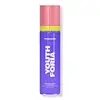What's inside
What's inside
 Key Ingredients
Key Ingredients

 Benefits
Benefits

 Ingredients Side-by-side
Ingredients Side-by-side

Water
Skin ConditioningGlycerin
HumectantPolyester-5
Butylene Glycol
HumectantBetaine
Humectant1,2-Hexanediol
Skin ConditioningCaprylyl Glycol
EmollientGellan Gum
Calcium Lactate
AstringentAllantoin
Skin ConditioningSodium Citrate
BufferingPanthenol
Skin ConditioningPrunus Mume Fruit Extract
HumectantPyrus Malus Fruit Extract
Skin ConditioningCarica Papaya Fruit Extract
Skin ConditioningVitis Vinifera Fruit Extract
Skin ConditioningSodium Acetate
BufferingAloe Barbadensis Leaf Extract
EmollientCucumis Melo Fruit Extract
Skin ConditioningOpuntia Ficus-Indica Stem Extract
Skin ConditioningVaccinium Myrtillus Fruit Extract
Skin ConditioningMorus Alba Fruit Extract
AntioxidantSalix Alba Bark Extract
AstringentSodium Hyaluronate
HumectantCentella Asiatica Extract
CleansingCI 14700
Cosmetic ColorantWater, Glycerin, Polyester-5, Butylene Glycol, Betaine, 1,2-Hexanediol, Caprylyl Glycol, Gellan Gum, Calcium Lactate, Allantoin, Sodium Citrate, Panthenol, Prunus Mume Fruit Extract, Pyrus Malus Fruit Extract, Carica Papaya Fruit Extract, Vitis Vinifera Fruit Extract, Sodium Acetate, Aloe Barbadensis Leaf Extract, Cucumis Melo Fruit Extract, Opuntia Ficus-Indica Stem Extract, Vaccinium Myrtillus Fruit Extract, Morus Alba Fruit Extract, Salix Alba Bark Extract, Sodium Hyaluronate, Centella Asiatica Extract, CI 14700
Water
Skin ConditioningAcrylates Copolymer
Rosa Damascena Flower Water
MaskingGlycerin
HumectantPropanediol
SolventC11-15 Sec-Pareth-12
EmulsifyingPPG-1-PEG-9 Lauryl Glycol Ether
EmulsifyingPhenoxyethanol
Preservative1,2-Hexanediol
Skin ConditioningNiacinamide
SmoothingPanthenol
Skin ConditioningChamomilla Recutita Flower Extract
MaskingSodium Benzoate
MaskingSodium Hyaluronate
HumectantSodium Hydroxide
Buffering
 Reviews
Reviews

Ingredients Explained
These ingredients are found in both products.
Ingredients higher up in an ingredient list are typically present in a larger amount.
1,2-Hexanediol is a synthetic liquid and another multi-functional powerhouse.
It is a:
- Humectant, drawing moisture into the skin
- Emollient, helping to soften skin
- Solvent, dispersing and stabilizing formulas
- Preservative booster, enhancing the antimicrobial activity of other preservatives
Glycerin is already naturally found in your skin. It helps moisturize and protect your skin.
A study from 2016 found glycerin to be more effective as a humectant than AHAs and hyaluronic acid.
As a humectant, it helps the skin stay hydrated by pulling moisture to your skin. The low molecular weight of glycerin allows it to pull moisture into the deeper layers of your skin.
Hydrated skin improves your skin barrier; Your skin barrier helps protect against irritants and bacteria.
Glycerin has also been found to have antimicrobial and antiviral properties. Due to these properties, glycerin is often used in wound and burn treatments.
In cosmetics, glycerin is usually derived from plants such as soybean or palm. However, it can also be sourced from animals, such as tallow or animal fat.
This ingredient is organic, colorless, odorless, and non-toxic.
Glycerin is the name for this ingredient in American English. British English uses Glycerol/Glycerine.
Learn more about GlycerinPanthenol is a common ingredient that helps hydrate and soothe the skin. It is found naturally in our skin and hair.
There are two forms of panthenol: D and L.
D-panthenol is also known as dexpanthenol. Most cosmetics use dexpanthenol or a mixture of D and L-panthenol.
Panthenol is famous due to its ability to go deeper into the skin's layers. Using this ingredient has numerous pros (and no cons):
Like hyaluronic acid, panthenol is a humectant. Humectants are able to bind and hold large amounts of water to keep skin hydrated.
This ingredient works well for wound healing. It works by increasing tissue in the wound and helps close open wounds.
Once oxidized, panthenol converts to pantothenic acid. Panthothenic acid is found in all living cells.
This ingredient is also referred to as pro-vitamin B5.
Learn more about PanthenolSodium Hyaluronate is hyaluronic acid's salt form. It is commonly derived from the sodium salt of hyaluronic acid.
Like hyaluronic acid, it is great at holding water and acts as a humectant. This makes it a great skin hydrating ingredient.
Sodium Hyaluronate is naturally occurring in our bodies and is mostly found in eye fluid and joints.
These are some other common types of Hyaluronic Acid:
Learn more about Sodium HyaluronateWater. It's the most common cosmetic ingredient of all. You'll usually see it at the top of ingredient lists, meaning that it makes up the largest part of the product.
So why is it so popular? Water most often acts as a solvent - this means that it helps dissolve other ingredients into the formulation.
You'll also recognize water as that liquid we all need to stay alive. If you see this, drink a glass of water. Stay hydrated!
Learn more about Water